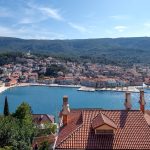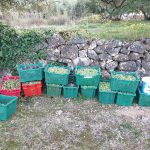There were not many things that I knew for sure when I was a small boy, but one of them was that becoming an adult would mean that I would never again have to eat the things that were forced on me as a child.
Cabbage, broccoli, and the biggest evil of all – Brussels sprouts – would be banished from my diet forever on the occasion of my 18th birthday. I would eat what I wanted and eat when I wanted.
And then I moved to Croatia.
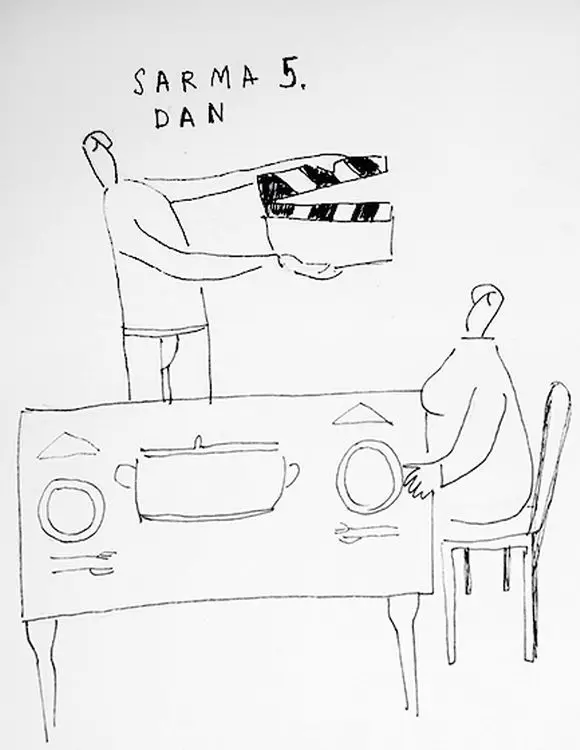
(If you want to understand the magic of Dalmatia, all you need is Tisja Kljakovic Braic Art)
Of all the things I never thought I would do in life, craving cabbage was right up there at number two, just behind craving Brussels sprouts.
And yet, here I was, lusting after one of the finest dishes known to man – sarma.
Delicious cabbage leaves wrapped around a tasty mix of mincemeat, rice and spices, and served with mashed potato. I honestly think I could eat it every day and not get bored of it. Especially if made by my wife or mother-in-law.
After years of living in the consumer society in the ‘civilised’ West, where bland and watery fruit and veg were available 24/7, 365 days of the year, Croatia was a revelation. Things might only be seasonal, but when they were available… wow!
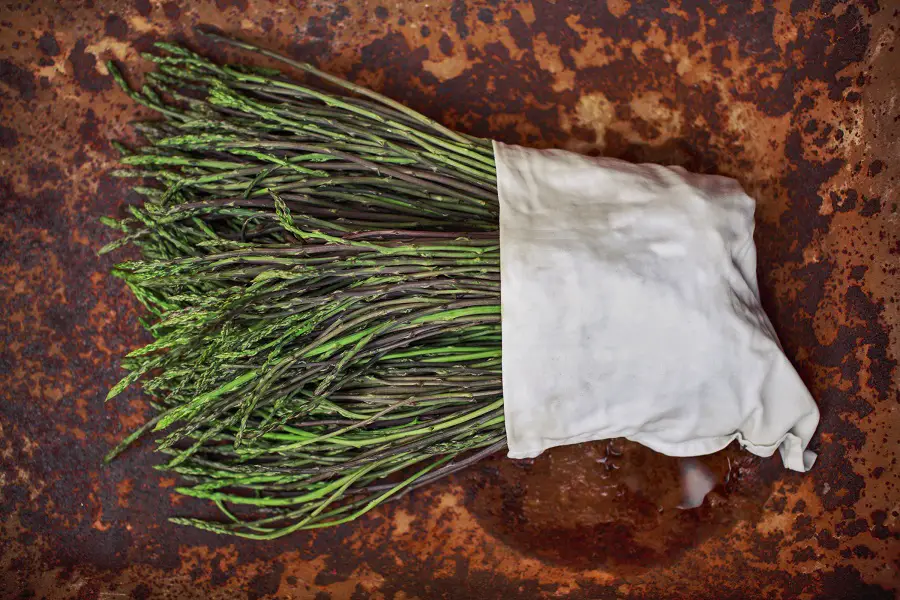
(Wild asparagus by Romulic & Stojcic)
Asparagus was close to cabbage for the Olympic bronze in my childhood diet, but wild asparagus in Croatia in March – a totally different league. I have yet to go foraging for wild asparagus, but if none was available then I would be in the forest searching. And this being Croatia, I would have to pay a tax on the wild asparagus I picked (yes, really).
For cabbage and asparagus, read just about any fruit and vegetable that grows in Croatia. Taste, freshness, quality, seasonality. A different world.
And yet, for the first couple of years – until I tasted my mother-in-law’s cooking – I had really no idea that Croatian cuisines was that special. I was a bit like that Anthony Bourdain chap, who came across Croatian food a decade ago.
This is world-class wine, world-class food, world-class cheese. If you haven’t discovered Croatian cuisine, you are a f*cking idiot. I am a f*cking idiot.
Bourdain came to Croatia a decade after me, and he had better connections and introductions than I had. With the notable exception of my punica (mother-in-law). And I will confess that initially I was not overly impressed with the food on my newly adopted island of Hvar.
Back in 2003, there was a joke among the small expat community. Somewhere in Croatia, there was a factory which produced restaurant menus. The menu was the same for all restaurants around the country, with two blank areas – the name of restaurant and the prices. For the menus were all the same.
Back then, the quality of the restaurants was really not that great, and the fare was very standardised. The only thing that really stood out as somewhat exotic (albeit unappealing) was octopus salad.
We Brits are a bit funny about our food, and octopus is not a staple you will come across in the UK. I had tried it in a curry in Zanzibar, but in Croatia it seemed to be a very popular dish,and one which my Croatian friends recommended a lot. I finally took the plunge.
Delicious! It remains my number one starter recommendation to newbies to Croatia. An absolutely gorgeous dish.
As I got to know the local ways a lot better through my new Croatian girlfriend, suddenly a whole new world opened up. Fresh produce, grown in the family field, provided the bulk of the food needs – what was in season could be found on the table. And you knew it would be delicious and fresh. And with my wife and punica preparing age-old simple but highly tasty dishes, food would never be the same again.
During the pandemic, we took the decision to spend the lockdown on Hvar rather than in Varazdin. We figured that whatever happened, there would be more freedom on the island, as well as access to the family field if things got really tough. I remember debating how much toilet paper to buy (remember that global panic?), and in the end, I decided on a pack of 20 only, explaining to my wife and daughters that we would have 5 each. And after that, if the crisis continued, we would have to find more natural solutions.
“Six each for us, Daddy, and 2 for you. You are a boy.”
I was less concerned at how long my two rolls of toilet paper would last than the food. If the predicted food shortages did happen, then islands would hardly be the priority to restock. I need not have worried. Money might have been tight due to cancelled clients, but the family field, and the culinary magic of my wife and punica, delivered some of the tastiest meals in my time in Croatia during that restricted period. You certainly could not buy those flavours in a Manchester supermarket.
I learned very early on in Croatia to take every day as it comes, and to try anything once. I have never lived in a country where the unexpected happens all the time, as it does in Croatia. Meat shopping? On my first week on Hvar, I was taking the bus from the ferry to Jelsa through the inland village of Vrbanj, when the driver screeched to a holt. There was a man selling half a dead pig by the side of the road, and the driver fancied a piece for lunch. Unfortunately, he had no money, and so had to borrow from the passenger ticket revenue. There was just enough for two kilos.
One of the nicest traditions I enjoyed out of season was the fisherman who landed a particularly large fish, and who would have difficulty finding a local buyer at a good price with all the restaurants closed for the season. A raffle ticket system was introduced – 10 kuna a ticket, with enough tickets sold to compensate the fisherman for his catch, with one lucky winner taking the fish home for lunch for the price of a coffee.
Dalmatia at its finest.
Trying anything once in the Croatian context can land you in some interesting waters. My favourite example of this was back in 2012, when I decided to write the first modern guide book for Hvar in 20 years. I had no idea what I was doing as usual, but I embraced the new challenge with enthusiasm and set about trying to learn even more about my adopted home to make the book more interesting.
I learned some really amazing things about Hvar – that it was home to the oldest public theatre in Europe, that organised tourism in Europe began on Hvar back in 1868, and that the biggest festival on the island celebrated… wait for it…
… the edible dormouse.
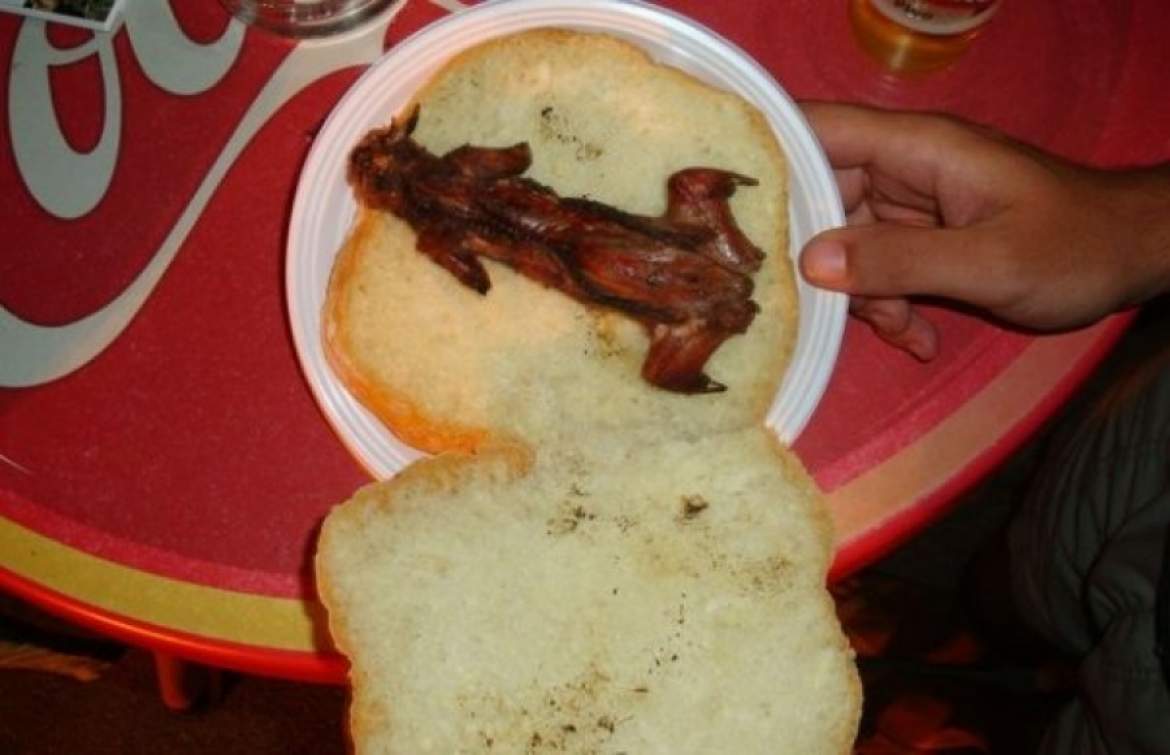
Not quite believing this to be true, I headed off to the village of Dol to the annual Puhijada (‘puh’ is dormouse in Croatian), a festival with its very own currency – the superpuh.
I wasn’t quite sure where to go and ended up in the village restaurant, where an American yoga instructor friend was having dinner with six vegan clients on the last day of their yoga retreat. They had heard about the dormouse festival and were a mixture of disgusted and intrigued. So intrigued that they decided to come with me, then egg me on to try a dormouse. Odd behaviour for vegetarians, I grant you, but their curiosity got the better of them.
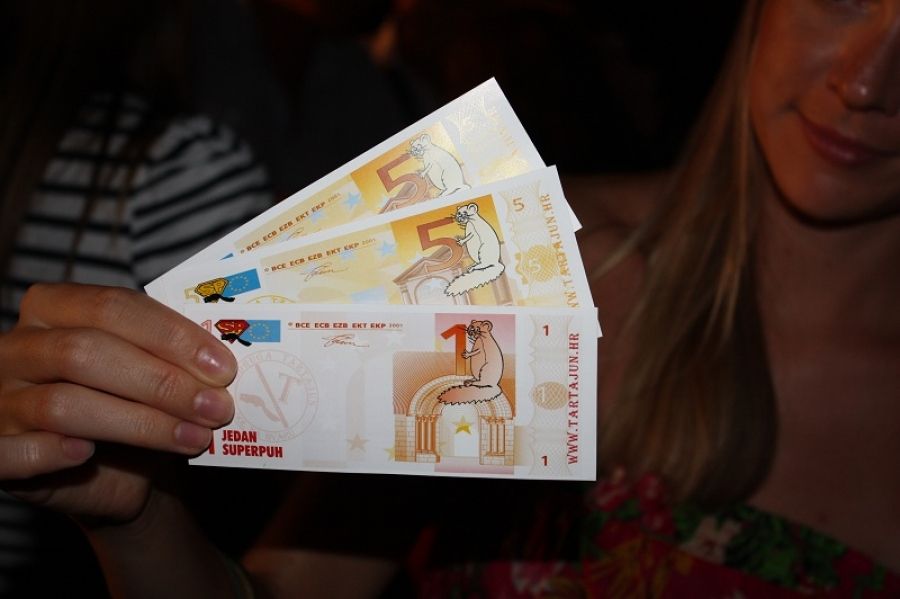
I exchanged 50 kuna for 10 superpuh, which was enough for one dormouse (whole) in a bun, washed down with a beer. Six vegans looked on, holding my beer, while I did battle with the little rodent. There was not a lot of meat, but what there was was very tasty indeed.
I learned that dormouse is only actually eaten in three places in Croatia. on the grill on Dol on Hvar and Dol on Brac, and in a stew in Gorski Kotar. It was part of my initiation into the wonderful world of Croatian cuisine, which is VERY individual.
I learned very quickly that there are two truisms about the Croatian gastronomic space. Firstly, if it grows, Croats will make a festival out of it. I have been to some really weird food festivals in my time here (not that I am saying that a dormouse festival is mainstream) and tried some super weird shit on that journey. Lavender ice cream at a lavender festival on Hvar, fava bean ice cream at a fava bean festival in Kastela, and pumpkin beer at the annual Bucijada pumpkin festival in Ivanic Grad. Want to know about the weird and wonderful food festivals that await you in Croatia – Natural Food Festivals: 25 Things to Know about Croatian Gourmet Goodness.
The second truism about Croatian gastronomy is that if it grows, a Croat somewhere will make rakija out of it. Croats make rakija from EVERYTHING, and the third truism about Croatian gastronomy is that every Croat will tell you that their home-made rakija is the best.
99% of them are VERY wrong.
I have come to fear the drinks cabinet back home. Glass bottles with no labels filled with liquids of varying threatening colours, whose origins I have long forgotten. Some of the nice rakijas in the world come from Croatia – and those from honey, sage and mistletoe can be superb – and some of the very worst too. I have had rakija from olives made by a priest, one from tree bark, and several spurious varieties in between. For more about this essential part of Dalmatian life, check out my rakija guide in Rakija, Disconnecting People: Production, Flavours, Types.
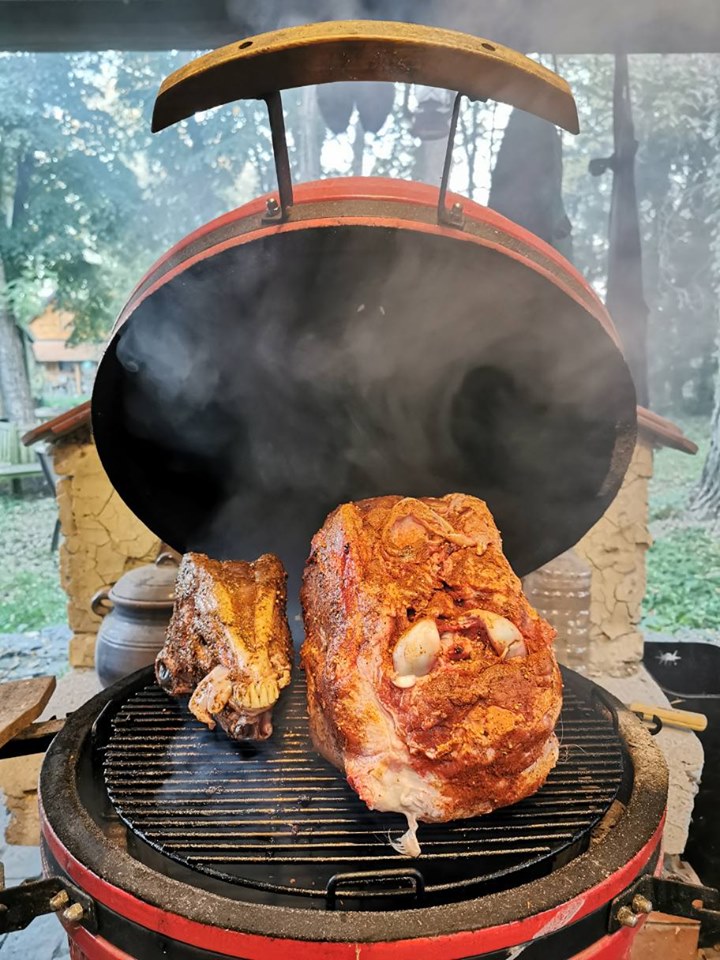
(Goat brain kebabs were a tough sell to the kids, but delicious when prepared by Mario Romulic in Baranja)
Croatia doesn’t have a national cuisine – how cool is that – but it does have some outstanding, and very individual regional cuisines. Seafood and blitva (Swiss chard) might be all the rage in Dalmatia, but truffles and variations of pasta were large in Istria, whereas Slavonia was a meat-eating heartland, the land of kulen, one of the finest things known to man. Wherever I travelled in Croatia, I knew that high-quality and fresh food awaited.
But I also noticed something rather strange. While Croatia is strong in regional cuisine, it is actually quite rare to find a region’s cuisine represented in the form of a restaurant in another region. Dalmatians love kulen from Slavonia, but how many Slavonian restaurants have you come across in Dalmatia? Or Dalmatian restaurants in Istria, for example?
If there is one person more than anyone who enhanced my knowledge and understanding of Croatian food, it is Karin Mimica of Gastronaut. One of the finest humans on the planet, Karin has been tirelessly promoting Croatian food and wine for longer than I have been in Croatia. She also organises what – for me at least – are the best foodie tours in Croatia with her team from Gastronaut, a club of foodie journalists, hoteliers and restaurateurs. And me.
With Karin, I have come to explore so many different regions in Croatia, both the cuisine and the tourism. Medjimurje, Djurdjevac, Koprivnica, Ozalj, Hvar, Krk, Rogoznica, Pag and several more, as well as an international trip to Slovenia, and soon to Egypt.
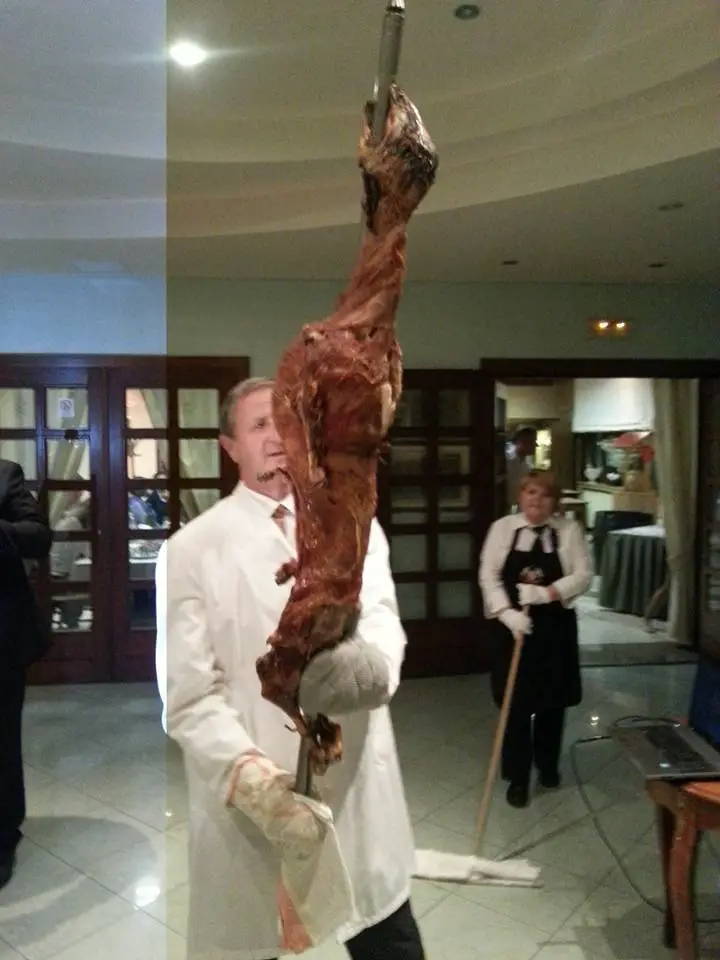
One of the many highlights was the 9-course lamb menu at Restaurant Zganjer near Ozalj, superbly entitled Her Majesty, the Lamb. And what an entrance with course 8, above. You can see the whole menu, dish by dish, here.
Croatian cuisine has developed in the last 20 years, although the adherence to the finest and freshest local ingredients remains. The old expat joke about the factory with the same menu no longer holds true, and there have been some truly creative twists on traditional Croatian cuisine in recent years.
There has also been a steady expansion in the international culinary scene. It was a curious thing that I noticed when I went to Albania for the first time in 2001. There were about 20 restaurants offering international cuisine – Mexican, Japanese, German etc. At the same time in Zagreb, there was a Chinese and an Indian, and that was it. In Sarajevo, despite thousands of NATO troops for years, almost nothing. Albanians and those from former Yugoslavia emigrated and were refugees. The Albanians seemed to embrace the places they lived in and returned with things that they had picked up there – in this case in the form of international restaurants, whereas the former Yugoslavs tended to stay in their communities and so bring back little culinary innovation.
It was a long time until Croatia started to have any noticeable international food scene, and even when it did come, it was not welcomed by many locals.
I remember breaking the story of the first Japanese restaurant in Split back in 2013, a lovely retired Japanese man, whose Split connection I have now forgotten. There was glee among the small expat community. And dismay among the locals. Why do we need foreign food? Dalmatian food is the best, and tourists should eat Dalmatian food when they are here. If they want to eat sushi, they can go to Japan.
Ah, Dalmacija.
The one thing I never really came to terms with in Dalmatia, much to my father-in-law’s disappointment, was blitva (Swiss chard). It is probably the favourite of my wife and her parents, but I never got into it. And I think I accidentally rather offended my father-in-law the first time I appeared in the Croatian media back in 2012.
I was in the Saturday edition of Slobodna Dalmacija, and I was on the back page, talking mostly about my new Hvar guidebook. The journalist had asked me lots of questions, and everything was very positive.
“What do you not like about Dalmatia?”
“Blitva,” I replied, thinking no more of it until I saw the back page headline – Jelsa has become my home, but I don’t like blitva.
My father-in-law was not impressed.
It was three years before I could make amends, trying blitva on national television on a tourism programme about Jelsa tourism. You can see how I got on in the video above – the blitva moment starts at 03:58.
There is one really big negative about Croatian cuisine, with all its seasonal goodness and freshness. Once you get used to that quality, it is really hard to go back. After years of living here, I went back to Manchester to a big supermarket. I was stunned at the choice (Jelsa in 2007 was not exactly blessed with much), but that initial feeling turned to shock when I took a closer look. The tomatoes were almost orange and looked as though they were mostly water. Compared to the enticing red tomatoes from the family field, it was no contest. Many Croatians living abroad tell me that they feel that they are truly back home in Croatia when they get to see, feel and taste the local fruits and vegetables. They just taste so much more wholesome and, well… so Croatian.
(I suppose you might expect something about Croatian wine in this section, but that has already been done in an earlier chapter.)
****
What is it like to live in Croatia? An expat for 20 years, you can follow my series, 20 Ways Croatia Changed Me in 20 Years, starting at the beginning – Business and Dalmatia.
Follow Paul Bradbury on LinkedIn.
Croatia, a Survival Kit for Foreigners will be out by Christmas. If you would like to reserve a copy, email paul@total-croatia-news.com Subject 20 Years Book



